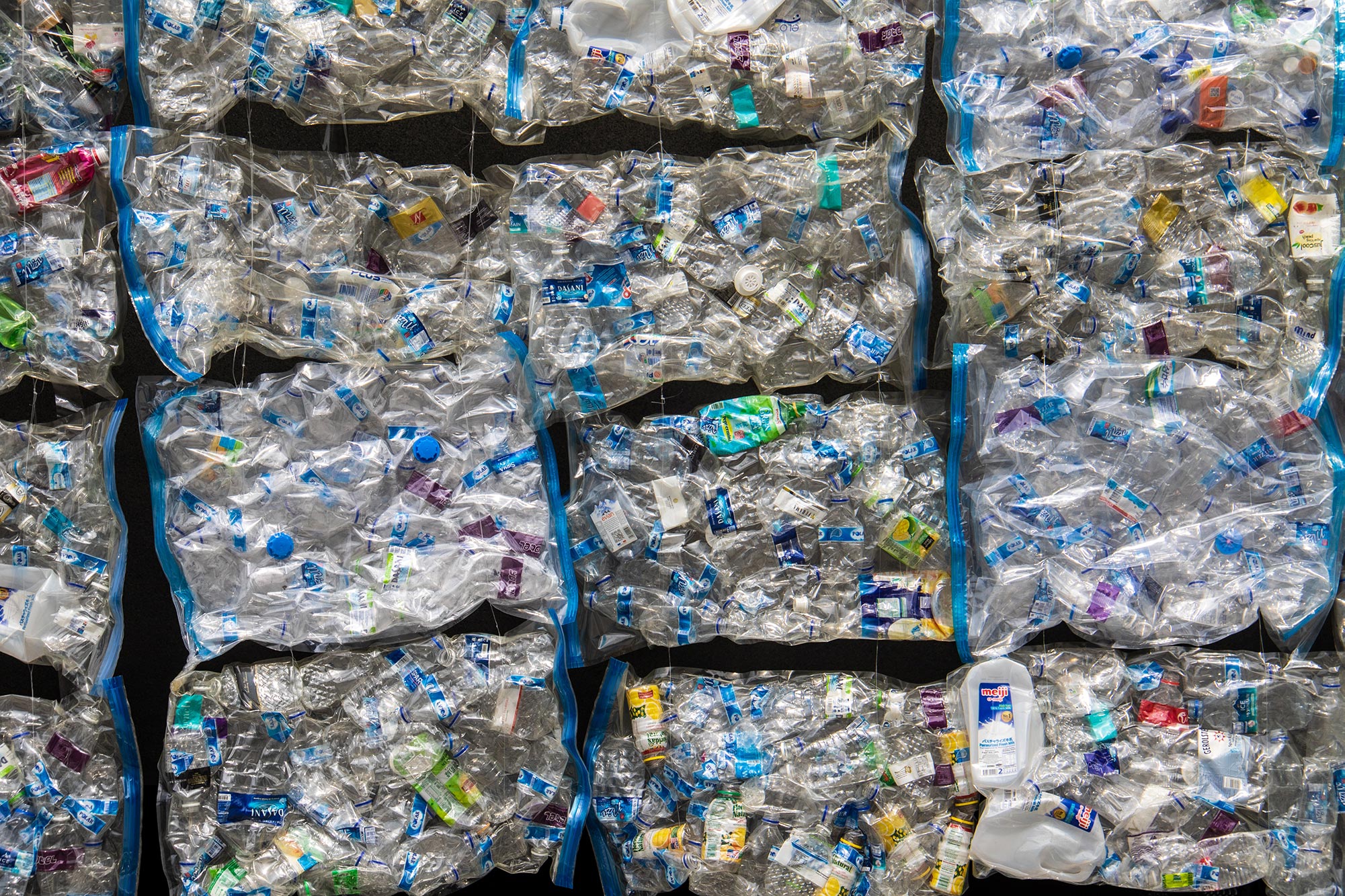
Can plastics recycling be profitable?

Plastics recycling in industrial areas
plastics, plastics recycling, circular economy, resource wisdom, business cooperation, port, waste, value chain, piloting, reuse
It has become apparent that more plastics need to be recycled. The purpose of this concept is to launch plastic recycling activities in industrial areas and to create cooperation between companies to achieve climate goals. An experiment was carried out to illustrate the functionality of recycling, to obtain information about the volumes of plastics and to collect feedback from companies in Vuosaari Harbour.
- 6443 kg/year: the theoretical amount of plastic waste generated in Vuosaari Harbour.
- 80% of the collected plastics could be reused instead of being used to produce energy according to the pilot project.
- Emissions: carbon dioxide emissions are significantly lower in recycling-oriented solutions than in the current solution in which plastic waste is mainly burnt.
This solution is suitable for
- cities that want to encourage companies to do their bit for climate change;
- companies that want to start recycling their waste or improve their existing procedures;
- companies that are looking for new business opportunities in the recycling sector.
BASIC FACTS
- Location: Vuosaari Harbour, Helsinki
- Life cycle: active phase.
- Organisers: Satu Pasanen/VTT Technical Research Centre of Finland, Juha Hakala/VTT Technical Research Centre of Finland, Saara Pellikka/City of Helsinki.
- Time span: 3 months – 1 year.
- A ‘plastic pilot’, a joint experiment to collect plastic waste from companies, was carried out during the concept development phase. Packaging plastics and plastics from logistics operations were collected from companies in Vuosaari Harbour. The pilot project was carried out in cooperation with the City of Helsinki and the Port of Helsinki between 16 November and 31 December 2020.
- The recycling solutions were compared to the current ones from the perspective of the economy and carbon emissions.
- The concept encourages the reuse of plastics.
The first plastic recycling concept in Vuosaari Harbour
National and international targets, such as the plastics roadmap for Finland and the EU plastics strategy, accelerate the recycling of plastics. The concept was inspired by the enthusiasm of companies in Vuosaari Harbour for recycling – it started at the grassroots level. The purpose of the concept is primarily to start collecting plastics in the industrial area and, secondarily, to promote cooperation between competing companies to achieve the climate goals.
During the conceptualisation phase, a pilot project was carried out in collaboration with public-sector operators, companies and a research institute. Practical experiments such as this produce scientifically valid and pragmatic data, encourage companies to try new work methods and increase dialogue between cities and businesses.
Piloting provides facts for conceptualisation
A ‘plastic pilot’, a joint experiment to collect plastic waste from companies, was carried out during the concept development phase. Packaging plastics and plastics from logistics operations were collected from companies in Vuosaari Harbour. The pilot project was carried out in cooperation with the City of Helsinki and the Port of Helsinki between 16 November and 31 December 2020. Seven logistics companies took part. Plastic material was collected in a waste compactor equipped with a smart scale, which was on loan from Europress Group Oy for the duration of the test.
A total of 812 kg of various types of plastics was collected, mainly polyethylene (LDPE) and polypropylene (PP), which were taken to be reused. The plastic materials were sufficiently clean for the purposes of the collection experiment. Participants filled in a questionnaire afterwards that collected feedback and user experiences for concept development. Most participants found it easy to take part in the plastic pilot and joint collection efforts. Companies thought that collaboration was viable, especially with regard to waste management and other environmental services.
Comparative information with economic and environmental perspectives
The economic perspective was illustrated and assessed in the context of Vuosaari Harbour’s location and the pilot carried out there. Different solutions were created for this industrial area in terms of waste management and recycling, and in addition to the current situation, two alternative solutions are presented, A and B. In the current situation (REF), plastic waste is not recycled but is sent to be burnt at a waste-to-energy facility. Solution A does not involve sorting at the place of origin but all plastic waste is put together and taken to a recycling company. In solution B, plastic waste is sorted at the place of origin, i.e. only LDPE and PP plastic waste is collected.
The results show that the current situation (REF) is the cheapest if only 6.5 tonnes of plastic waste is generated per year, but this option becomes the most expensive as the amount of waste increases. Solutions A and B, which encourage people to recycle, are more economical when the volume is 1.5–2 times higher. Carbon emissions in solutions A and B are significantly lower than in the reference situation. An increase in the amount of plastic waste in solutions A and B generates lower level of emissions than the reference situation.
Putting the concept into practice
The concept is based on solution B, in which the LDPE and PP waste collected from the companies in the port is sent to mechanical recycling. There is also already an industrial recycling solution. As it develops, the concept aims to apply solution A, in which a wider variety of plastic waste can be collected and sent either to be reused as recycled material or as material for the petrochemical industry. Introducing solution A will require cooperation with a suitable recycling or sorting company located near the industrial area. In both solutions, the flow of plastic waste from nearby areas is added to the flow from the port as this increases the impact on the local area. The concept is based on the idea that plastic waste generated in the area is returned there in products used in the area (e.g. packaging films or bags) or is used in products such as fuels used by machines in the area.
All respondents said that a joint collection of plastics should remain a permanent part of the port’s operations. The joint collection model is easy to adopt and scale to suit different types of industrial areas. Expanded to cover the whole country, this type of activity in industrial areas would have the potential for substantial emissions reductions.

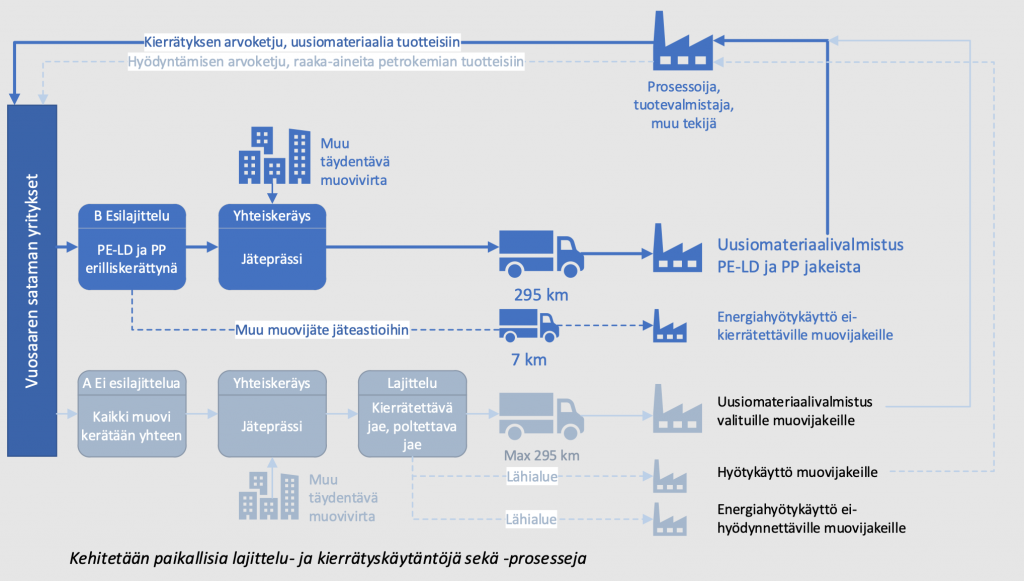
TAKE-HOME MESSAGES
- Companies are enthusiastic about plastic recycling and they want their operations to be more sustainable.
- Piloting provides scientifically valid, practical information on the amount of waste generated in an area and companies’ recycling-related requirements and practices.
- Competing companies can collaborate and gain environmental and economic benefits.
- Cities will be able to persuade companies to adapt the climate goals by launching new pilot projects that focus on emissions reductions and resource wisdom and that benefit companies in the short or long term.
“As the global use of plastics increases, we need recycling to curb this trend. Solutions are created at the local, national and international level. Recycling captures plastic waste for reuse or recovery and offers environmental and economic benefits to businesses.”
– Satu Pasanen, Research Scientist, Circular Economy Developer, VTT Technical Research Centre of Finland
Download
Links
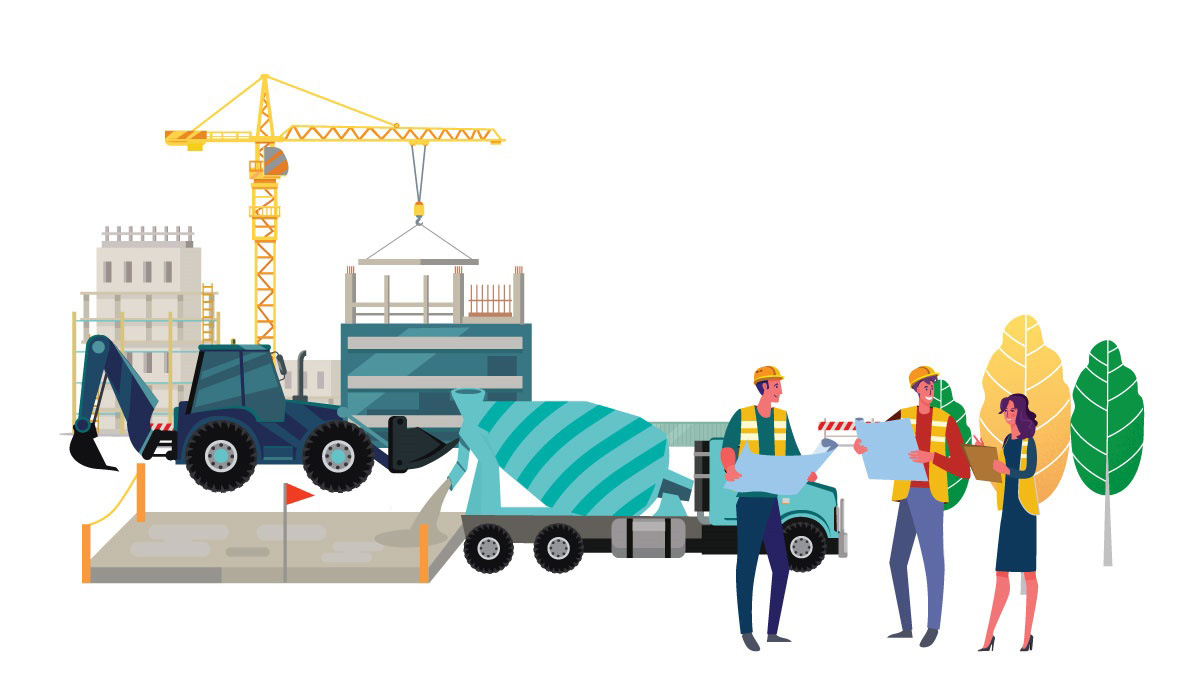
How can a construction site be completely fossil free?

Emission-free construction sites – green deal agreement for sustainable procurement
zero emissions, building and construction, construction sites, heavy machinery and equipment, green deal, public procurement, climate work, procurement methods, Ministry of the Environment, local authorities
The non-binding green deal agreement for emission-free construction sites was published in autumn 2020. The goal of the agreement is to reduce emissions from contracting entities’ construction sites over a long period of time. So far, the agreement has been signed by six major public contracting entities. Anyone can apply the principles of the concept without being a green deal member, but working with others provides more impactful results which are easier for organisations to anticipate.
- 10 years. Ambitious goals for emission-free construction sites have been set for the next 10 years. The concept supports the implementation and site-specific application of environmental requirements that contribute to these goals.
- 100+. The joint dialogue on emission-free construction sites with stakeholders attracted over 100 participants in February 2021. The results of the dialogue were used to amend environmental requirements which will be introduced later.
- 25%. Emissions from transport and operations on construction sites account for 25% of annual greenhouse gas emissions caused by construction activities. This concept gives organisations concrete instructions on how to reduce emissions.
This solution is right for you if
- you are in charge of construction at a green deal member organisation or work as an expert in construction projects and you are looking for more information about environmental criteria;
- you work in an expert role at a non-green deal member organisation and you are looking for examples or more information about environmental criteria;
- you work as a contractor and you want to learn more about emission-free methods to apply on a construction site; or
- you want to learn more about monitoring and verifying the machinery and equipment used on emission-free work sites.
BASIC FACTS
- Project parties: KEINO Competence Centre for Sustainable and Innovative Public Procurement, City of Helsinki, City of Espoo, City of Vantaa, City of Turku, Senate Properties, Helsinki Region Environmental Services HSY
- New public sector organisations are encouraged to join the Agreement on a broad front.
- Time frame: 2020-2030
The green deal agreement for emission-free construction sites launched a long-term joint development project towards less emissions from construction sites
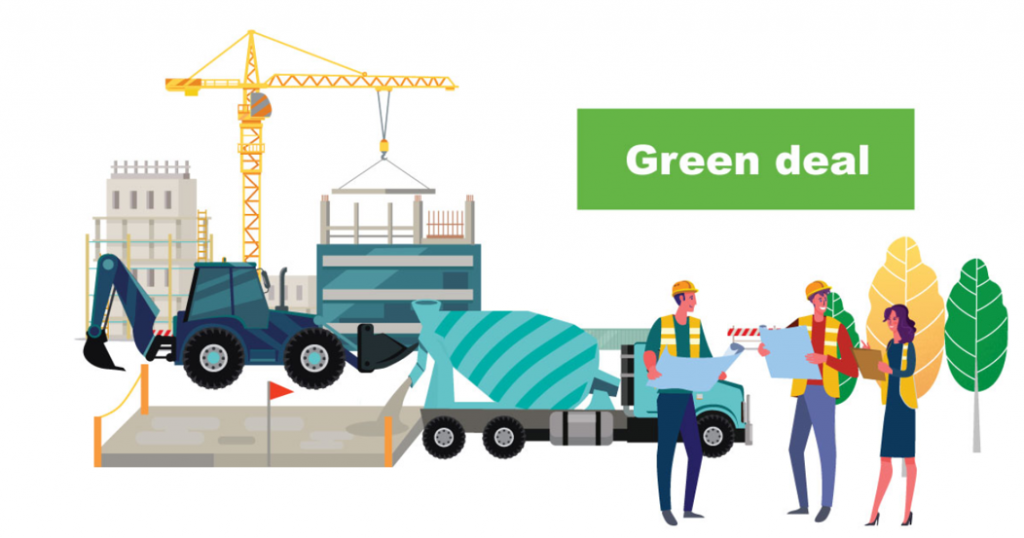
Made between the Ministry of the Environment and public contracting entities, the Agreement contributes to Finland’s goal of becoming carbon neutral by 2035. Procurement decisions can have an impact on a significant proportion of emissions from construction sites and support the achievement of the target of net zero carbon. The green deal agreement focuses on emission category requirements for heavy machinery and transport as well as promoting low-emission motive power types. The purpose of the agreement is to increase the proportion of low-emission heavy machinery and to promote the introduction of new practices and tools both on construction sites and in procurement processes.
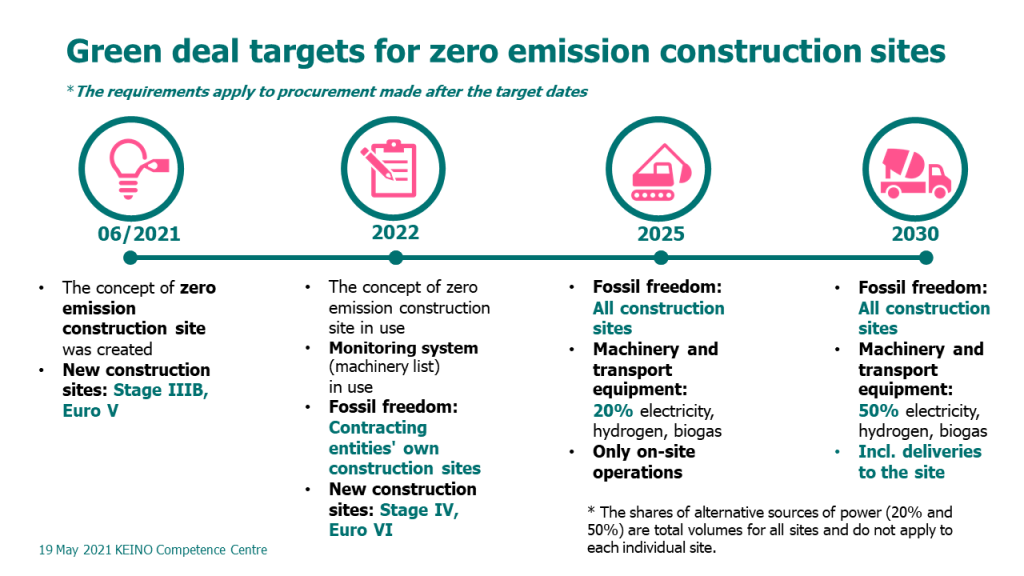
The concept supports the achievement of the agreement’s targets while helping other organisations reduce emissions
The concept of emission-free construction sites has been drawn up as part of the green deal agreement for emission-free construction sites and the HNRY project. The concept supports the implementation of the green deal agreement, but it can also be used by non-green deal members.
The concept provides an overview of principles and practices which are used to reduce emissions from construction sites. The goal of the concept is to reduce emissions, harmful exhaust gases and noise from construction sites. The concept does not cover aspects such as the carbon footprint of building materials or life cycle emissions from construction.
Where applicable, the concept of emission-free construction sites can be used for example in the following applications done in-house or contracted by contracting entities:
- in-house maintenance works;
- in-house building and construction (infrastructure and housing); and
- tendered maintenance works and projects.
A more detailed framework has been defined as part of the organisations’ own strategies and, for example, in the implementation plans of the contracting entities of the member organisations of the green deal agreement for emission-free construction sites.
The concept of emission-free construction sites supports the non-binding green deal agreement for emission-free construction sites made in 2020. Contracting entities which have not signed the Agreement can use the tools provided by the concept to reduce emissions from their construction sites.
There are three types of environmental requirements laid down in the concept:
- Minimum requirements for heavy machinery based on the green deal agreement.
- Methods to promote alternative motive power types (electricity, biogas, hydrogen).
- Other environmental requirements, such as environmental management systems and contract-specific environmental plans.
The concept also contains guidelines and recommendations on how heavy machinery operators can adopt low-emission practices.
Great results through engaging in market dialogue and applying the principles of the concept
The concept does not include direct recommendations on which environmental criteria to adopt, and each organisation must adapt the content of the concept to fit their individual targets and market environment.
The development of the green deal agreement and the concept of emission-free construction sites was boosted by empirical knowledge gained from the low-emission pilot construction sites of the cities of Helsinki and Espoo. Information gained from the pilot projects has been used to develop specifics such as procurement criteria, monitoring, fleet lists and market dialogue. Organisations wishing to promote skills on emission-free construction sites can apply the concept’s environmental requirements and practices in any pilot projects or contracts they might have.
Each year, the member organisations of the green deal agreement for emission-free construction sites engage in joint market dialogues, in which they discuss the requirements and their scopes in more detail. By joining the green deal agreement for emission-free construction sites, contracting entities can participate in the joint development project.
TAKE-HOME MESSAGES
- Goals are the first step towards the implementation stage and only the beginning of the long-term development work.
- Defining the final environmental criteria requires engaging in dialogue and working with companies. If necessary, there is room for adjustments to be made to ensure that the requirements are relevant and that they can be met.
- Anyone can apply the principles of the concept without being a green deal member, but working with others provides more impactful results which are easier for organisations to anticipate.
- Cities/municipalities/organisations can pick and choose the practices that best suit their procurement strategies and construction projects from the concept.
Publications
Concept of emission-free construction sites, version 1.0
The joint concept of emission-free construction sites and procurement criteria will be developed further as the progressive targets laid down in agreement are met. Member organisations provide training to their customers and other key target groups in the application of the principles of the concept of emission-free construction sites and joint procurement criteria.
“The green deal agreement sets forth ambitious joint targets and actions we all need to take to meet the targets. Different parties are strongly committed to working together and under the same rules, and this is also supported by the concept of emission-free construction sites. The green deal agreement offers contracting entities a concrete method of promoting their own net-zero carbon targets while also providing advice and tools that support their work in practice. Sharing experiences and lessons learned and engaging in a dialogue with the market play a key role. Agreements help us to create a long-term vision, towards which we need to take the activities and the market to pave the way for everyone towards a new zero-emission operating mode.”
– Leena-Kaisa Piekkari, Specialist, Ministry of the Environment of Finland
Download
Links
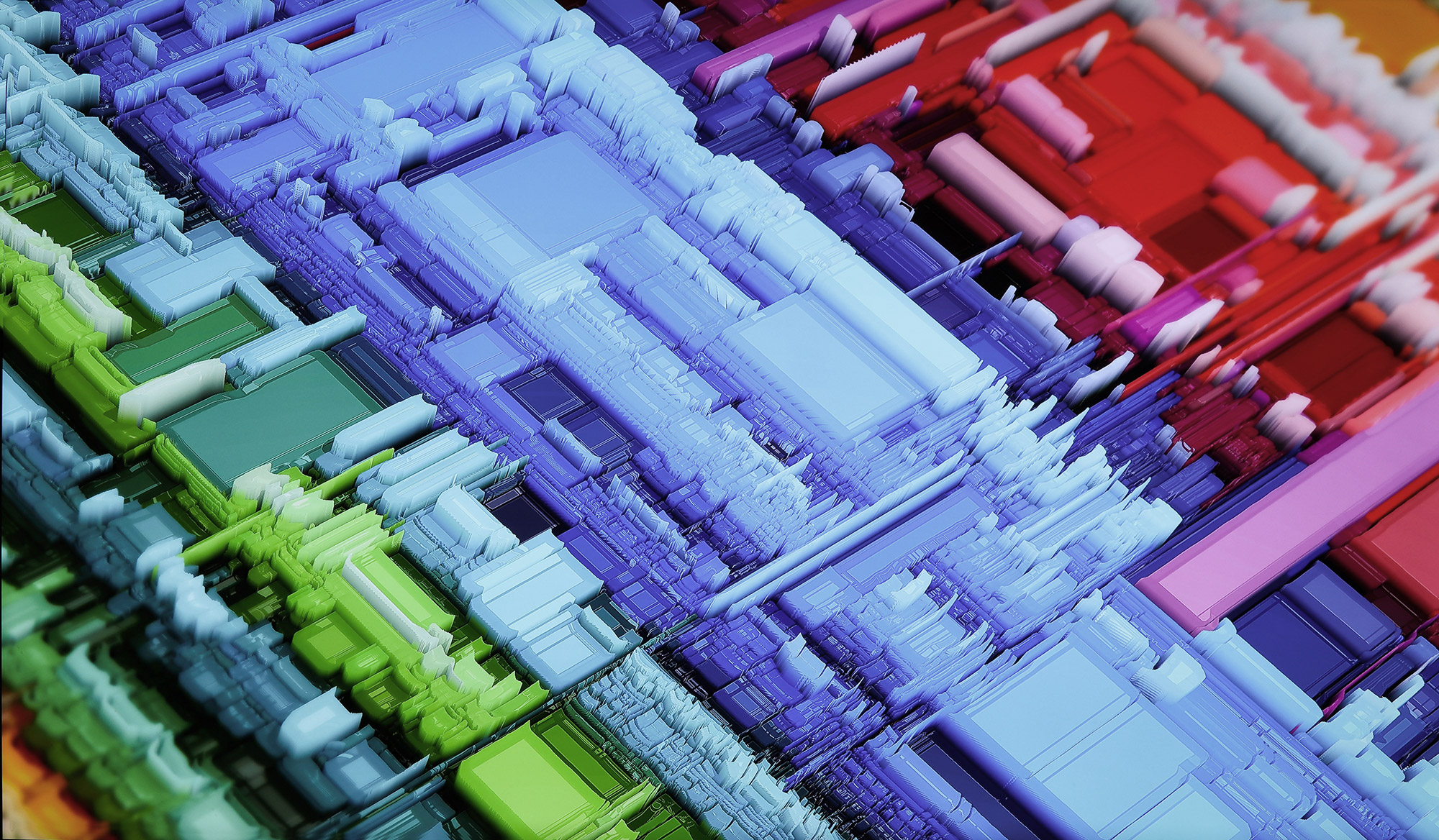
What will the virtual industrial area of the future look like?

A virtual industrial area as a platform for sustainable business
platform, platform economy, cooperation, business model, sharing, information system
A virtual industrial area is a modular service platform built in conjunction with an actual industrial area to improve communications between operators and to create opportunities for companies in the area to work together to promote their businesses, carbon neutrality and resource wisdom.
- Willingness and creativity: for a virtual industrial area to be viable, companies in the area must be willing and have the creativity to build an understanding of what the shared virtual industrial area could look like.
- The role of cities: cities can play key roles in the building of virtual industrial areas, and the concept may well contribute to achieving their carbon neutrality goals.
- Different levels: a virtual industrial area can have a number of levels and operating models that can be developed module by module as required.
This solution is right for you if
- you are interested in developing creative solutions of the future for industrial areas;
- you want to develop shared functionalities, sharing services, resource management, better communications or business operations in your industrial area;
- you want to explore new approaches to business environments.
BASIC FACTS
- This concept has been implemented within the framework of futures research. Practical applications require area- and partner-specific assessment and implementation.
- Some virtual industrial area solutions have already been put into practice. Some themes are studied and assessed as opportunities.
- The concept is implemented by:
- University of Turku, Finland Futures Research Centre (FFRC), Essi Silvonen
- VTT Technical Research Centre of Finland, Satu Pasanen and Maria Antikainen
- Specialists and participants in the solutions forums in the HNRY project
- The concept has been piloted with Mika Härkönen and Taneli Fabritius of VTT Bioruukki
Shareable resources and matching needs to create resource-wise solutions
The resource wisdom of a virtual industrial area is based on sharing resources and achieving the highest possible capacity utilisation rate. This will result in a reduced need for resources, a lower environmental load, streamlined operations and improved profitability. A virtual industrial area is a platform that connects nearby companies by providing them with a variety of services and taking responsibility for fulfilling their shared obligations in a transparent manner. It also gives operators in the area bargaining power when negotiating the price of services.
A virtual industrial area can offer:
- solutions for maintaining, servicing and maintaining facilities;
- services related to sharing and joint use;
- solutions for energy harvesting and energy use at the industrial area level;
- solutions for warehouse and transport logistics;
- solutions for materials and side flow management;
- other services;
- solutions to promote staff wellbeing;
- business opportunities for companies in the area, for companies that provide services to them and for the platform operator;
- a platform for product and service development;
- virtual visitor services;
- better connections and communications in the area;
- data collection and processing, means to measure environmental impacts;
- zoning of a specific area.
What is required for the creation of a virtual industrial area?
A virtual industrial area needs a body that is responsible for its construction, implementation and operations. In addition to reducing the environmental burden, the area must also be economically viable. The platform needs a technical implementation model that makes it possible to add, remove and modify functions as the area develops and requirements change.
It is hardly worth building a virtual business platform on the basis of companies’ current needs, but it is necessary to assess their future needs as well as possible changes in their business. Changes to a company’s role on the platform and advances in operating models must be taken into account in the platform’s architecture to ensure that the platform’s operating principles do not limit but support and enable companies’ development.
Virtual industrial areas offer a great variety of trajectories and opportunities. It is unlikely that there are many areas that would immediately try to cover a broad range of functionalities, but it is more likely that an area will use the platform to address certain key challenges or objectives shared by the companies, and that the range of functionalities will expand over the platform’s life cycle.
Case: VTT Bioruukki’s virtual industrial area – an active research, collaboration and business platform
VTT Bioruukki, located in Espoo, is VTT’s piloting centre for bio-based products and circular economy solutions. It is part of Espoo Cleantech Garden, which will undergo a large-scale extension project in the coming years to bring together operators in the fields of science, education and research. Key players in the development of the area are the City of Espoo, Omnia, the Joint Authority of Education in the Espoo Region, and NCC. The aim is to ensure that the area is built into a diverse environment that creates a framework for comfortable housing as well as for successful business operations. The area is estimated to be completed in the 2030s, housing up to 9,000–12,000 people, while the number of new jobs is expected to be about 2,000.
Various levels of cooperation in the virtual industrial area
Education – VTT works with educational institutions on education and projects. The virtual industrial area can be used to reach and use both operators’ networks, to share equipment and expertise and to form consortiums for joint projects.
Piloting – the virtual industrial area can serve as a practical piloting platform and a channel for sharing practical solutions with platform operators and end customers.
Technology commercialisation – the virtual industrial area can help to find early-stage financing as well as international and domestic talent. Professional commercialisation experts can also operate on the platform. It can form a virtual idea incubator and commercialisation platform and provide both leverage and collaboration from larger companies that operate on the platform.
Visitor services – the virtual industrial area can be used for virtual visits as well as virtual presentations for visitors to the actual premises, AR presentations, better accessibility and access to the most interesting details in the place without disrupting piloting operations or compromising trade secrets.
Other services – catering, accommodation, culture, sports, guidance, translation, other professional services.
Resource sharing platform – VTT has piloted an industrial sharing platform in an in-house project, based on the idea of providing companies with a platform to share and find different equipment, machinery and human resources. When companies need something, the smart system can find it in the local area; in this case, in the virtual industrial area.
Environmental and infrastructure services – there is a wide range of functionalities in the actual industrial area, and, by working together closely, operators can have sufficient purchasing volume to be able to negotiate good deals on centralised services.
Local residents – the industrial area combined with areas for housing and businesses and as part of a public transport hub can serve as a research platform for a wide range of services, technologies and products. People who live nearby may also need to be informed of various events or malfunctions that can have an impact on the surrounding areas.
TAKE-HOME MESSAGES
- The resource wisdom of the virtual industrial area is based on sharing resources and achieving the highest possible capacity utilisation rate, which means that the overall need for resources as well as the environmental load are reduced while efficiency and profitability improve.
- The concept of a virtual industrial area is modular, which means that such an area can have different layers or functional entities according to the practical needs of the companies located in the area.
- As the virtual industrial area is still at the design stage, it would be useful to start exploring it in such a manner that the principles can be studied and developed in practice. The companies and, possibly, research institutes in the area would also need to be part of these collaborative efforts.
- There is a special precondition for the implementation of a virtual business platform: it needs to generate added value for those involved as well as profitable business for the companies that create and maintain the platforms.
Lähteet:
HNRY- Liikenteen ja logistiikan ratkaisufoorumi 14.11.2019 asiantuntijaesitykset, materiaalit ja työpajamateriaalit
Virtuaalisen yritysalueen ratkaisufoorumi 24.11.2020, esitykset, materiaalit, keskustelu.
VTT Bioruukki pilotointi 25.2.2021, mukana VTTn puolesta olivat Mika Härkönen, Taneli Fabritius, Maria Antikainen ja Satu Pasanen
Kommentointi 5G ratkaisufoorumien osallistujat 8.-16.3.2021
“The virtual industrial area is a promising concept that offers new approaches to how to collaborate in industrial areas. We would like to carry out practical experiments in the next phase to see how a virtual industrial area works and what future opportunities it could bring to VTT Bioruukki and Cleantech Garden.”
Taneli Fabritius, VTT, 23.3.2021
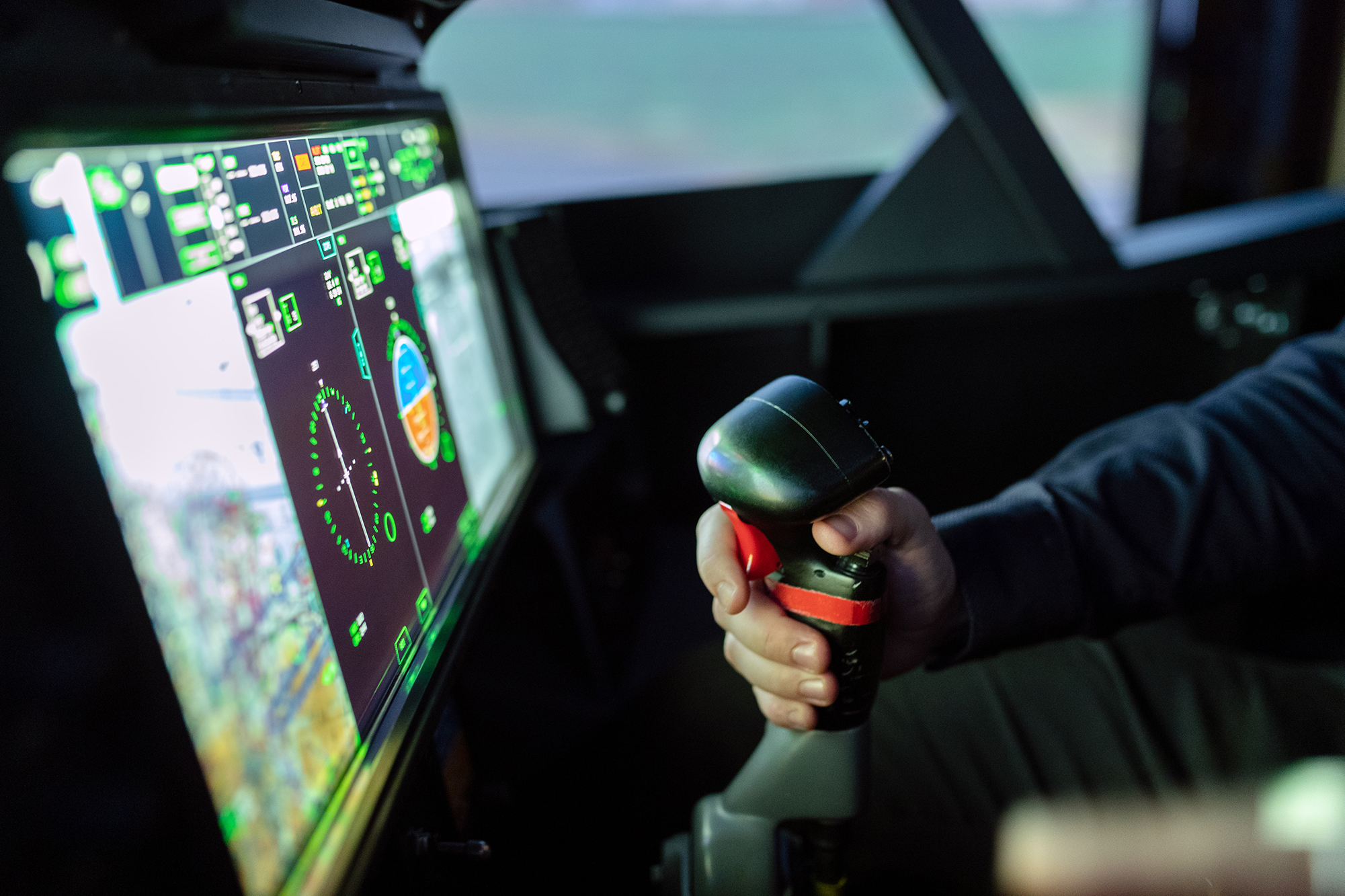
How can a company reduce its environmental footprint through simulator training?

Simulator training to encourage resource-wise use of machinery
resource wisdom, education, learning, virtual environment, simulation, operating methods, competence
The size of a company’s environmental footprint depends on its operating models and work methods. This concept examines the various ways in which simulation environments enable new types of training for using machinery, developing techniques and ways to minimise environmental impacts.
- Minimise: learn resource-wise techniques and minimise the energy consumption of your machines.
- Certify: train new staff and verify your staff’s skills.
- Take action: plan to ensure resource-wise operations.
This solution is right for you if
- your company uses machinery or produces logistics solutions;
- you are interested in simulation environments and their use for learning purposes;
- your job involves planning training activities or you are interested in improving work methods.
BASIC FACTS
- Simulation training is suitable for all companies that use machinery and develop logistics solutions
- Simulation training in a virtual environment creates resource-wise and environmentally sustainable solutions to meet companies’ training and development requirements
- Simulation-based training solutions are already available and are expected to evolve in the coming years
- The concept is implemented by:
- University of Turku, Finland Futures Research Centre (FFRC), Essi Silvonen
- The HNRY project’s transport and logistics solutions forums
- The practical applications have been evaluated in cooperation with ADE Oy
New resource-wise ways to boost emissions reductions
It is essential to find work methods that can be changed to reduce emissions and act in a more resource-wise manner. Reductions made by changing the activities of an individual employee may be small, but the cascade effects resulting from a systematic change become significant in the context of industrial areas.
The principles of carbon neutrality and resource wisdom go hand in hand with health and safety. The principles can be incorporated into professional qualifications and, consequently, they become part of the required techniques. Employees also learn to see and develop their activities in terms of environmental criteria.
The purpose of this concept is to reduce the energy used by machinery; this is achieved by minimising energy loss in operations, streamlining practices, shortening transitions as well as optimising loads and the use of storage capacity. These operational efficiency goals are common and shared by companies. The concept examines how training activities using simulations in virtual environments can help to achieve these goals.
Resource-wise learning will take place in virtual environments
Virtual environments have evolved over the years and are expected to continue to do so. They are used more commonly, and the number of applications designed for educational purposes has also increased. Most training courses are held at educational institutions, but some are also organised in industrial areas. Competence assessment and training play an important role when it comes to recruiting and placing new staff as well as in maintaining and developing current staff’s skills.
Training in a simulation environment has a much lighter impact on the environment than training in a real environment. It allows for the assessment of skills and practising and refining of new skills as required without causing a significant environmental burden.
Methods of using machinery can be improved in virtual simulation training
There are already virtual training solutions that focus on topics such as transporting machines, their safe use and deployment. These solutions are also connected to an industrial area’s carbon neutrality and resource wisdom, which is why it is interesting to see how simulation training can support emissions reduction and resource-wise techniques. The focus is primarily on machines and how they are used in industrial areas, but similar principles also apply to other activities in these areas. Resource-wise work methods can be developed through measures such as training courses on the environmental footprint, skills assessments, training and certification of new employees’ skills, further training and maintaining professional skills, minimising machines’ fuel/energy consumption and planning and optimising work and material flows in the industrial area.
How is simulation training organised in practical terms?
We use the virtual training centre developed by ADE Oy as an example. It can be located either on a company’s premises, in an industrial area or on the premises of a local vocational training centre or other service provider. The virtual training centre is a modular package that consists of the hardware, software, virtual headset and special aids required in the particular course. It is in constant contact with a control room, which provides technical support as well as assessment and approval of skills certification.
The virtual environment offers a variety of exercises from among which attendees choose the ones they need. There is also a test environment in which performances can be evaluated. The virtual training centre is a service with a monthly fee, which varies from a few hundred euros upwards, depending on the number of training modules. Virtual environments and simulation-based training courses are already available on various cranes, vehicles, fire safety, logistics operational safety, operations on construction sites and customer service situations.
See a more detailed presentation of the virtual training centre:
TAKE-HOME MESSAGES
- Virtual environments provide easy and cost-effective ways to organise training. The number of available courses is increasing and the scope of their content is expanding.
- The virtual training centre provides a resource-wise way to organise inductions for new staff, offer further training for current staff and to maintain professional skills.
- Virtual solutions and environments are not only suitable for training individuals but they also make it possible to provide larger virtual learning packages, in which a model of an industrial area or parts of it can be recreated in a virtual environment. This can be used to plan new work methods and assess the best way to implement changes and how they affect the operations as a whole.
- Virtual environments can be used to implement and simulate the progress of a construction site and the environmental footprint during construction, and they can also be used as tools for planning construction projects so that they are as resource-wise as possible.
“Training in virtual environments is a means for effectively practising sustainable work methods, and their future potential is limitless. We already have more than 40 simulators, which can be deployed quickly”
– Pasi Porramo, ADE Oy, 22.3.2021

How can climate action be measured in industrial areas?

Measuring carbon neutrality and resource wisdom
emission-free construction site, monitoring system, Technical Research Centre of Finland (VTT), life cycle assessment, measurement, emission calculation, resource wisdom, climate change mitigation
In order to effectively monitor the carbon neutrality and resource wisdom measures of industrial areas, emission calculations and monitoring tools must be continuously developed and applied. Emission reductions achieved in industrial areas are significant in view of the climate targets of their adjacent cities as the targets cannot be met without a contribution from businesses.
• Two construction sites: low-emission construction machinery were piloted in Espoo and Helsinki.
• Cooperation: the development of a monitoring system for construction site emissions started as a collaboration between the Technical Research Centre of Finland and the contracting entities of cities that are signatories to the sustainable procurement Green Deal agreement for emission-free construction sites.
• Plastic: the impact of plastic recycling on greenhouse gas emissions from waste treatment was assessed in a trial carried out in the Vuosaari Harbour area.
This solution is right for you if
- you are looking for general information on measurement and calculation methods related to carbon neutrality and resource wisdom targets for industrial areas and construction sites.
BASIC FACTS
- Location: emission-free construction site pilot in Espoo and Helsinki, Vuosaari Harbour, Blue Industry Park in Turku, energy efficiency project in Vantaa
- Implemented by: participants in the HNRY project (Carbon-neutral and resource-wise industrial areas project)
Emission reductions in industrial areas are important for the climate targets of the participating cities
The cities have set ambitious climate targets, and they aim to achieve carbon neutrality by 2035. When a city aims for carbon neutrality, it means that emissions produced within that area are reduced to a set level (e.g. 80% of the level of 1990) and the remaining emissions are compensated.
With regard to resource wisdom, cities aim for long-term targets that are based on EU targets (by 2040). Becoming resource-wise requires close interaction and development work, including in the management of materials and logistics, between the different project participants. For example, possibilities for resource-wise and energy-efficient use of construction machinery were reviewed at Vuosaari Harbour. There is also massive potential in materials recovery and intensifying circular economy as the plastic pilot project showed.
Basis and scope of emission calculations
The state and municipalities base their emission calculations on production or area. They include all greenhouse gas emissions produced within the set area (Scope 1) and emissions from the production of energy purchased from an outside source (Scope 2). When measuring the carbon neutrality of an individual business, the calculation can focus on direct GHG emissions (Scope 1), such as the use of fuels in energy production and in vehicles, and on indirect GHG emissions (Scope 2), such as emissions from the production of purchased electricity and district heating. The rest of the emissions are compensated (Scope 4).
For industrial areas, it is best to base the calculation on consumption so that emissions from the production, transport and disposal of products and services produced and consumed within the industrial area during a set period of time (Scope 3) are taken into consideration. An example of a consumption-based calculation can be found in the concept of emission-free construction sites for the Lukutori construction site.
Emission-free construction site – calculation scope and tools
Constructions sites usually have clear boundaries within which direct emissions are produced. Maintenance sites are not as clearly defined. Materials, fuels and purchased electricity mainly come from outside these boundaries. The scope of the emission calculation for a construction site depends on which processes are identified as most significant in terms of emissions.
In the Lukutori pilot project in Espoo, the majority of emissions were identified as being indirect emissions. The consumption-based calculation used also factored in emissions from the use and production of the fuel in the machinery, the production of batteries and electricity used for electricity-powered machinery, the production of electricity used for on-site power generation and the production and transport of materials used on site.
The emission calculation for the Kulosaari pilot construction site in Helsinki included emissions from the production of fuels (including biofuel) used in construction machinery as well as emissions from the production of electricity used by machinery and the construction site.
The lack of an established monitoring system has made it difficult to monitor the data needed for emission calculations. The parties to the Green Deal agreement for emission-free construction sites are in the process of developing a monitoring tool to be introduced by the end of 2022. The introduction of the monitoring tool and new practices will require contractors and machinery operators to be trained in order to ensure the quality of the data collected.
Data and tools for measuring and monitoring the climate action of industrial areas
An extensive overview on the factors affecting the resource wisdom and carbon neutrality of an industrial area has been drawn up and included in the Turku Blue Industry Park Guide. The scale does matter as energy-efficiency investments and the energy production of an entire industrial area or a cluster of businesses can bring significant emission reductions. An area can even become climate positive.
A pilot project that trained individual companies using company-specific customised content also produced training material for public use. Company training can be used to raise awareness of emission sources, assist with calculations and the implementation of climate measures.
In Espoo and Helsinki, the emissions of an emission-free construction site were compared to those from an “ordinary” construction site. The sustainable procurement Green Deal agreement for emission-free construction sites will help to harmonise practises and introduce monitoring tools for contracting entities.
Municipalities’ emission calculations tend to follow common guidelines but individual organisations and companies can apply such varying scopes and methods for calculating indirect emissions that it compromises the comparability of the results. There is a need for harmonisation, and this is why the experience gained during projects should be put into practice more widely.
TAKE-HOME MESSAGES
- The most sensible emission calculation method for an industrial area is consumption-based calculation.
- It is important to maintain the transparency of the calculation method and the reasons for the set scope.
- There is a need for methods to be harmonised, and therefore the experience in calculation methods and tools gained during projects should be actively put into practice more widely.
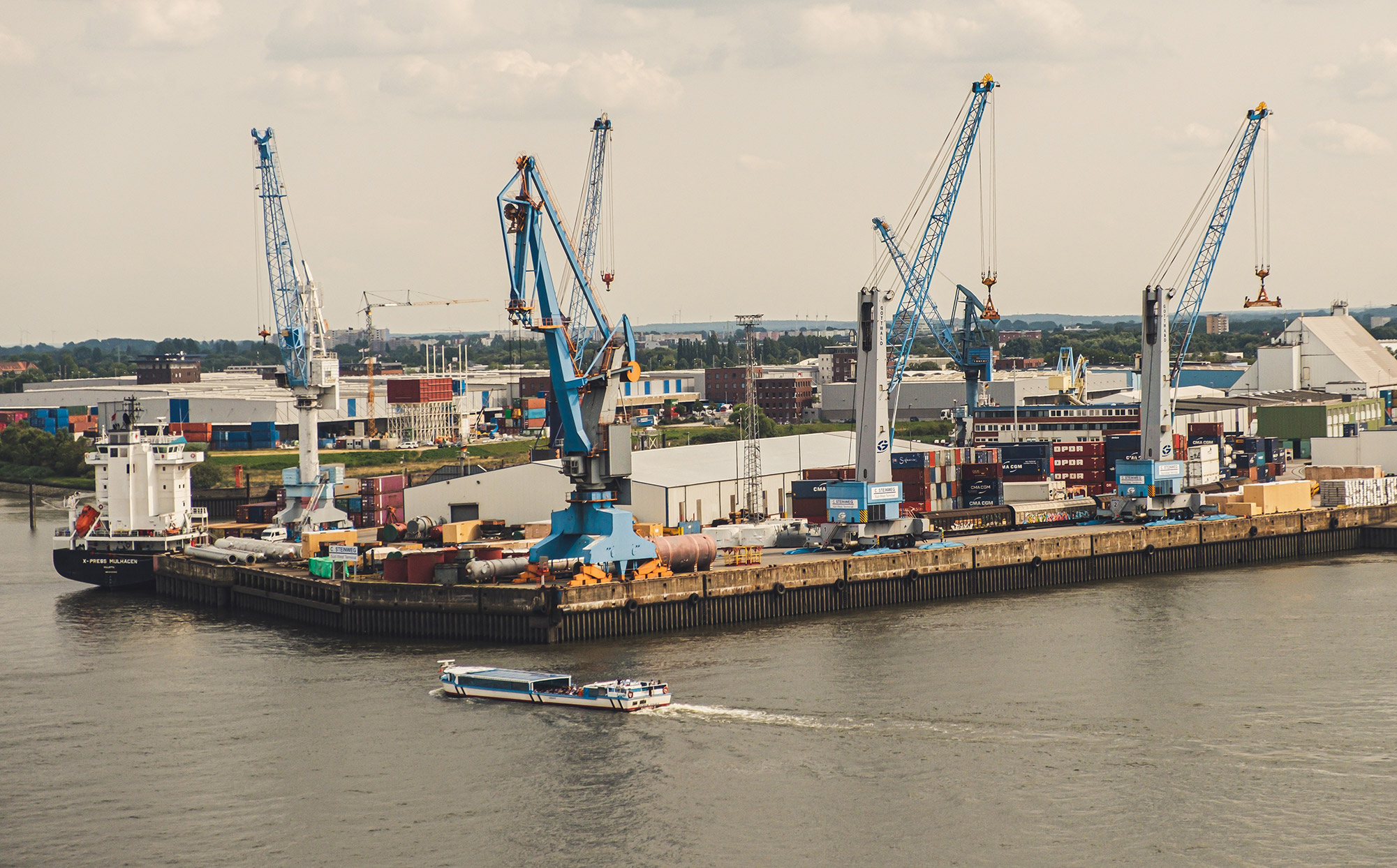
Is carbon neutrality and resource wisdom in a gated industrial area too narrow a perspective?
A resource-wise and carbon-neutral maritime industry network
reduce, reuse, recycle
The project developed an optimal operating model for flows of materials, resources and information in the Blue Industry Park and Turku Shipyard. The model can be used to achieve resource wisdom and carbon neutrality throughout the supply chain.
- 20–30% increase in value-adding operations.
- 3–7% reduction in material loss.
- 20% better production turnaround time through supply chain transparency and management.
- 5% lower material costs through centralised procurement.
This solution is right for you if
- you operate in the supply chain of Turku Shipyard;
- you operate in a manufacturing industry supply chain;
- you want to streamline your supply chain operations.
BASIC FACTS
- Location: Perno district, Turku. Next to Turku Shipyard.
- Industrial area life cycle: planning phase
- Organiser: Blue Industry Park Oy.
- Time span: 5–10 years from 2021 onwards.
- 600 companies in the supplier network.
- The maritime industry network in southwestern Finland employs 11,000 people.
- The turnover of the maritime industry network was EUR 3.3 billion in 2019.
The aim is to increase the efficiency of the maritime industry network
The concept identified how the operations of the maritime industry network could be streamlined, and an operating model was created for the planning and implementation of these improvements. The aim was to optimise the material, resource and information flows between the Blue Industry Park (BIP) and Turku Shipyard. The project assessed what kind of operating methods the companies in the maritime industry network should use in order to make the network’s operations as resource-wise and carbon-neutral as possible. Finally, it was determined what kind of control system would support resource-wise and carbon-neutral operations.
The logistics centre offers the best support to resource-wise and carbon-neutral operations
The concept determined which activities should be located in the BIP area in order to make the maritime industry network as efficient as possible and to support resource-wise activities. The key functionalities were production facilities and the logistics centre.
The need for production facilities varies: some operators require a small workshop while others need a larger production facility. The premises to be built must also be adaptable so that they can meet the changing demand. Pre-assembly and modularisation would also reduce the logistical burden in terms of traffic volumes and packaging materials. Traffic volumes are reduced when larger entities are transported and there are fewer deliveries of parts and components in the area.
Recycling reduces material waste
Recycling packaging waste and standardising transport packaging in the area would be very beneficial. If standardised methods were used for recyclable packaging materials, logistics operations would be clearer and the volume of packaging materials in the area would be reduced.
Building a centralised recycling centre in the BIP would serve companies in the area and help ensure that waste materials are recycled. The recycling centre would operate in the area between the BIP and the shipyard, which would be ideal for all parties.
With regard to the location of functionalities, traffic going into the shipyard must also be considered. The logistics centre should be located either beside or in the immediate vicinity of the production facilities in order to avoid any unnecessary traffic.
Information creates trust
Yhteistoiminnan ja resurssiviisauden edistämiseksi tarvitaan mitattua tietoa. Konseptiin liittyen määriteltiin viisi tärkeitä mittaria:
Measured data is required to promote collaboration and resource wisdom. Five important indicators were identified in relation to the concept:
- Security of supply of incoming materials
- DIFOT (Delivered In Full and On Time)
- Security of supply of site-specific material packages
- DIFOT (Delivered In Full and On Time)
- Progress of the site-specific plan
- Timing and accuracy of master production scheduling
- Timing and accuracy of detailed planning
- Implementation of the plan content
- Monitoring deviations
- Work package-specific monitoring
- Delivery line-specific monitoring
- Monitoring of transport volumes
- Monitoring of inbound logistics
- Monitoring of reverse logistics and material loss, surplus/waste
- 3R strategy (Reduce, Reuse, Recycle)
TAKE-HOME MESSAGES
- Material wisdom: centralised materials management can reduce material waste.
- Resource wisdom: minimising the amount of surplus material with more careful planning.
- Information wisdom: the information flow generated by the digital platform enables supply chain management and development.
“Stopping structural waste is the only way to save the planet.”
–Ari Viitanen, HPJ CarinaFour
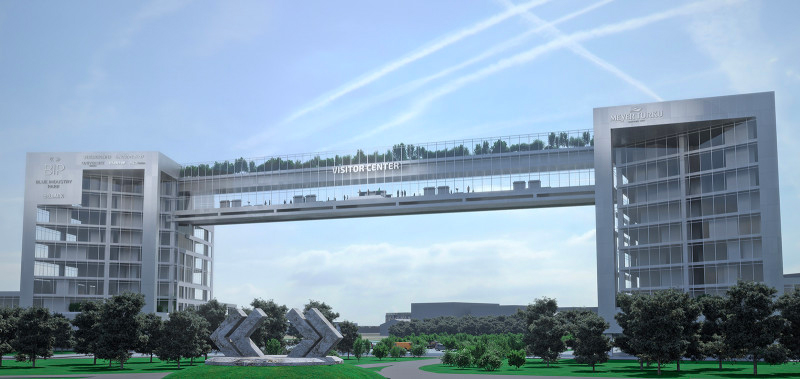
How to create a new resource-wise and carbon-neutral industrial area?

Blue Industry Park: the new resource-wise and carbon-neutral industrial area
hiilineutraali teollisuusalue
When building a carbon-neutral and resource-wise industrial area, it is necessary to take into account not only the planning but also the construction of the area and its day-to-day operations. The Blue Industry Park is an area that is gradually being built beside the Turku Shipyard, and it will be a functioning ecosystem of manufacturing industries and service operators. It takes the expertise and willing of all companies to achieve resource wisdom and carbon neutrality in the area.
- Blue Industry Park Oy. Established during the project to lead the construction of the area.
- Great transport links. Deep-water channel, E18, railway and distance to the airport 10 km.
- 55 hectares. Total area
This solution is right for you if
- you operate in the supply chain of Turku Shipyard;
- you operate in a manufacturing industry supply chain;
- you want to streamline your supply chain operations;
- you are planning a carbon-neutral and resource-wise industrial area;
- you are a contractor or developer in a carbon-neutral and resource-wise industrial area;
- you are a public operator, such as a planning officer, and you want to know how carbon neutrality and resource wisdom are implemented.
BASIC FACTS
- Location: Perno district, Turku. Next to Turku Shipyard.
- Industrial area life cycle: planning phase
- Organiser: Blue Industry Park Oy.
- Time span: 5–10 years from 2021 onwards.
- The maritime industry network in southwestern Finland employs 11,000 people.
- The value of Turku Shipyard’s order book in Q1/2021 is EUR 6.5 billion, cruise ship deliveries until 2026.
Towards a sustainable future
Blue Industry Park is a close-knit and diverse community of companies and research institutes, which are leading the change. There are no limits to its growth opportunities. The scalable spaces and shared resources provided in the area reduce the need for non-essential investments and enable business development in a sustainable and commercially viable manner. The community is responding to megatrends of production modularity and circular economy on a scope never seen before.
New technologies and cooperation are prerequisites for success
The concept guidelines do not provide ready-made solutions for the future, but they encourage all parties to share their expertise to achieve the shared goal. For the area to be successful, the best and most sustainable technologies and operating models available must be applied in every phase and solution.
The guidelines cover solutions for design and civil engineering, buildings and operations as well as transport.
Blue Industry Park’s ecosystem also includes service companies such as occupational health care, lunch restaurants and a visitor centre. Renewable energy sources are preferred, of course, and carbon neutrality is achieved by combining several solutions.
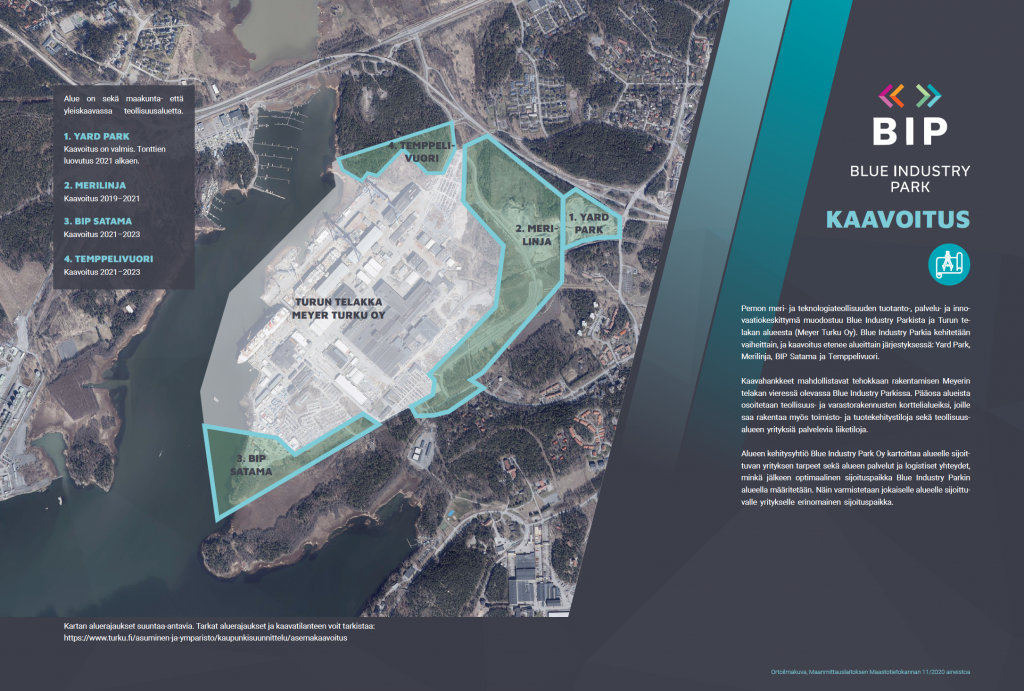
Research collaboration with universities
It is valuable for companies operating in the area that there are four institutes of higher education in Turku with research related to the maritime industry and maritime logistics. Blue Industry Park is a platform for productive cooperation in research projects and the supply of skilled labour both now and in the future.
The universities in Turku cover disciplines that are relevant to planning and building the area, such as energy technology, structural engineering, circular economy, economics and industrial management engineering.
TAKE-HOME MESSAGES
- The area’s location in relation to existing transport links and major customers is essential to minimise emissions from transport.
- When building the area, the use of land masses in the region and the area under construction must be optimised so that unnecessary transportation and costs can be avoided.
- Renewable energy production, transmission and storage solutions need to be considered at the planning phase.
- The flexibility and modularity of the facilities improve their occupancy rate and cost efficiency.
- Sharing machinery and equipment makes it easier to adopt new eco-friendly technologies and reduces the number of equipment needed in the area.
- There must be a leader with a clear role to create an area that runs on synergy and cooperation.
”Companies must assess and develop their practices: new ideas only come from doing things differently. We know that those who can realise their full growth potential, find the right partners and work in a carbon-neutral and resource-wise manner will be successful.”
– Tero Lahti, CEO, Blue Industry Park Oy.
Download
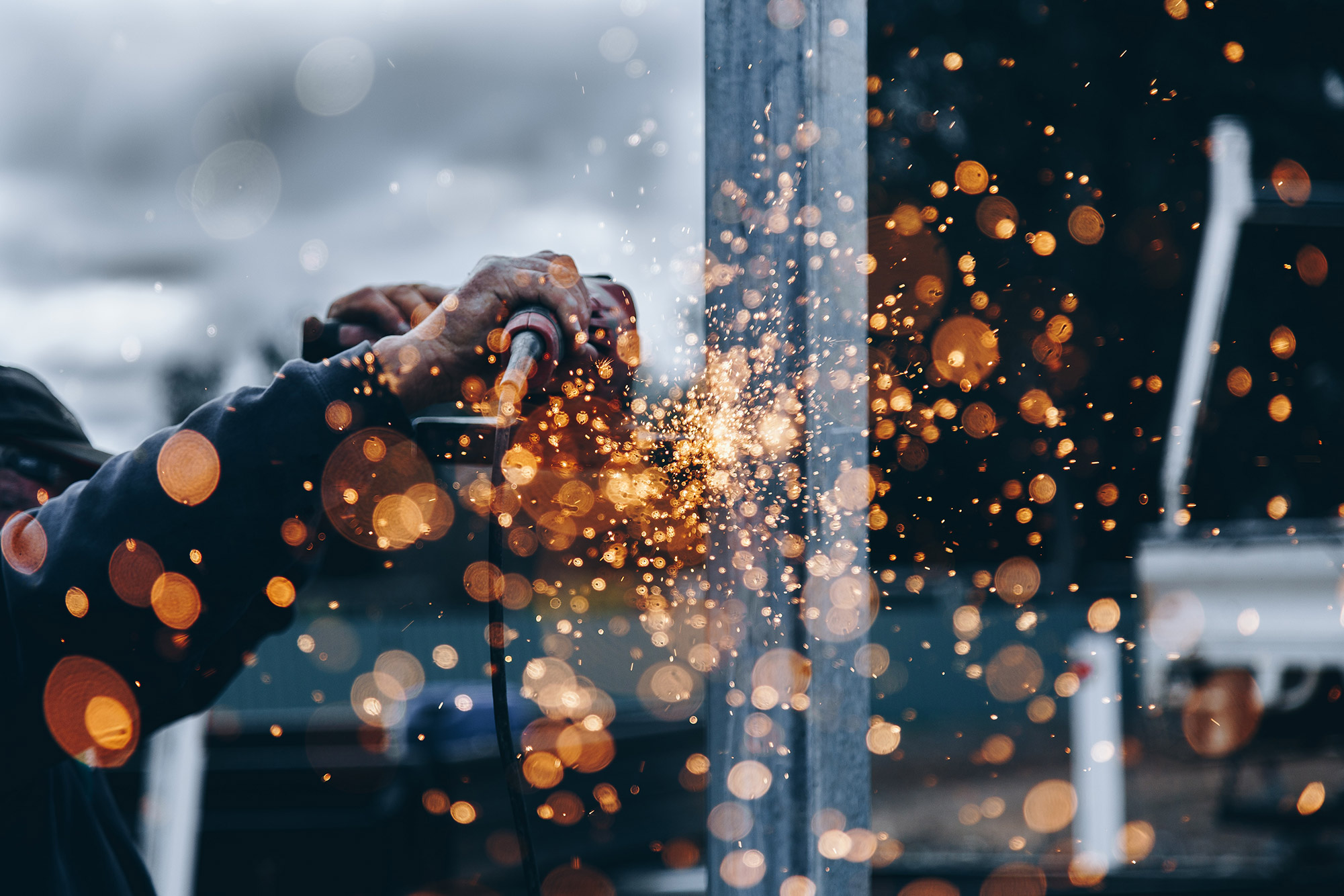
How can the city’s work sites become emission-free?

Emission-free work site: Turku
emission-free work sites, process, cities’ climate targets
Climate targets adopted by also cities require quick action to reduce emissions from the machinery and equipment used in construction and maintenance. Developing sustainable procurement strategies within the city is a multi-phase process requiring coordination, better understanding and cooperation within the industry and between partner cities.
This solution is right for you if
- your city is in the process of developing emission-free work sites and joining the Green Deal Agreement;
- you want to learn more about how emissions from heavy machinery are linked to cities’ climate targets and climate protection; or
- you are in charge of your organisation’s procurement, make purchases for projects in urban environments or coordinate projects related to sustainable procurement or work sites.
BASIC FACTS
- Location: Turku
- Organisers: Urban Environment Division and Central Administration of the City of Turku, Motiva, Valonia
- Time frame: 5/2019–5/2021
Reducing work site emissions is important for achieving climate targets
Heave machinery is used on building and infrastructure construction sites, and cities are planning to achieve significant reductions in the particulate matter and greenhouse gas emissions from these heavy-duty vehicles. According to the City of Turku’s 2018 climate report, heavy machinery and industries accounted for approximately 8% of the city’s annual greenhouse gas emissions. This rate has grown and continues to grow, proportionally, because the rates of the other largest emission sources, or energy and traffic, have started to go down.
The City of Turku has an ambitious goal of becoming climate neutral by 2029, which requires quick and systematic solutions. Working together with other cities and Motiva under the Emission-free Work Sites − the Green Deal for Sustainable Procurement Agreement has provided support and the framework for introducing the targets to the city’s different Divisions and for developing procurement criteria.
Following Oslo’s example and launching planning projects
In the HNRY project, emission-free work sites have been benchmarked in Oslo, a pioneer in using electric machinery on work sites. The site visit to Oslo provided practical information about the parameters and possibilities of using electric machinery on work sites in city centres. For example, providing electricity to the machinery is easier when the site is located near an electricity network with sufficient capacity.

Adopting new practices requires time and planning
Constructors are trying to quickly enter the era of energy efficiency and fossil-free energy. Reducing work site emissions requires established practices to be adjusted at the same time across different areas both within cities and in the operations of construction and machinery companies.
Electric heavy machinery and the criteria for emission-free work sites have already been piloted elsewhere in the campaign, but Turku has focused on working from the ground up as it plans to adopt the procurement criteria after the project has ended.
Turku case – process description to help other cities plan how to proceed
Turku’s process, from benchmarking and working with other HNRY partner cities and Motiva to the first discussions with the market stakeholders on the principles of emission-free work sites, provides an interesting example to other similar-sized cities with projects of the same type.
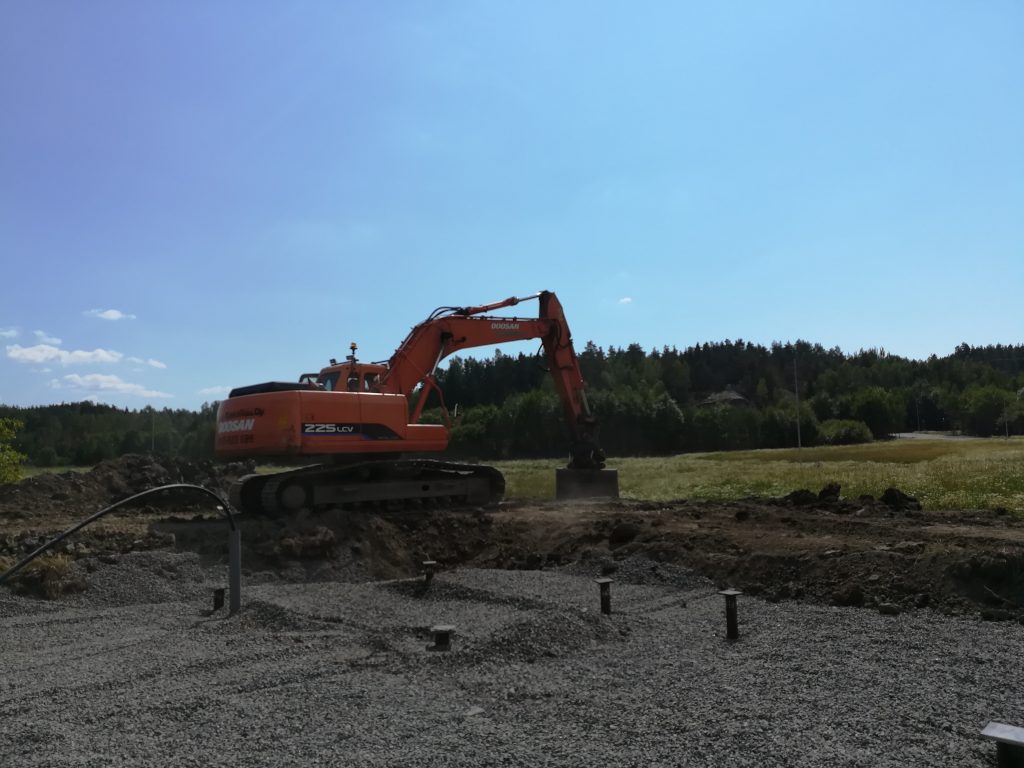
TAKE-HOME MESSAGES
- Cities and project structures are different; do not expect progress to be identical.
- Commitment alone is not enough – a lot must be done to achieve permanent practical changes.
- Working together is power, and examples help others to avoid pitfalls.
- Changes must be fair and equal to all parties involved.
- Other cities, both in Finland and abroad, are interested in examples from pilot work sites.
“Reducing emissions from work sites requires established practices to be adjusted at the same time across different areas, which is why it’s so important to have so many stakeholders involved from the start.”
– Minna Arve, Mayor of Turku, on 9 September 2020 at the signing ceremony of the Emission-free Work Sites − the Green Deal for Sustainable Procurement Agreement
Download
Links

How can nature-based solutions be used to advance carbon neutrality and preparedness for climate change in industrial areas?

Nature-based solutions for industrial areas
urban planning, green coefficient, carbon sink, preparedness, biodiversity, green waste, circular economy
Industrial areas typically have a large surface area of roofs and paved areas, which accentuates the adverse effects of climate change, such as floods and heat waves. In the Blue Industry Park in Turku, the management of storm water and floods is seen as particularly important even though nature-based solutions for preparing for climate change also increase the number of carbon sinks, makes the environment more enjoyable and protects endangered species.
This concept is right for you if
- you are planning a carbon-neutral industrial area;
- you are looking for ways to prevent the adverse effects of climate change and/or biodiversity loss; or
- you are interested in circular economy solutions in green space management.
BASIC FACTS
- Location: Blue Industry Park, Turku
- Industrial area life cycle: planning stage, infrastructure construction stage
- Organisers: city of Turku and students in the Circular Economy 2.0 course at Turku University of Applied Sciences
Urban planning ensures competitiveness and preparedness for change
The key objectives of the Turku City Strategy are the well-being and activity of citizens and competitiveness and sustainable growth of businesses. Competitiveness is built on dynamic businesses and the fact that companies want to operate in the city. By offering companies a competitive and business-friendly operating environment, the city also attracts international talent and organisations. Support for company service production and innovation-promoting networks will also contribute to the development of circular economy and the creation of jobs.
The city’s operating environment is changing due to climate change, digital transformation and positive structural change. This means that urban planning must stay ahead of this change. The fight against climate change means that energy efficiency and resource wisdom must be taken into account in all planning and activities. It is also important to protect biodiversity, and the significance of this will only become clearer as the city adapts to future changes and tries to mitigate their impact. The city is committed to reducing the environmental load from nutrient runoffs that intensify eutrophication and emissions from ships and boats as well as improving its oil spill preparedness.
Carbon-neutral and resource-wise Turku improves operating environment for businesses
Turku is aiming for carbon neutrality by 2029 and resource wisdom by 2040. How well these ambitious targets are met depends partly on businesses. It is estimated that the city of Turku can achieve around half of the required emissions reductions by making changes to its practices, while the remaining reductions must come from businesses and residents.
When planning for an industrial area, the city can decide to create a business-friendly operating environment that enables carbon-neutral and resource-wise operations. The city aims to develop a functional urban structure and sustainable and seamless logistics and personal transportation while taking into consideration the internal solutions of the industrial area and the way the area is connected to the surrounding city through traffic, energy and services.
Energy use and production for heating, cooling and electricity accounts for around half of Turku’s emissions (in 2020). The city’s energy system reform will enable companies to use fossil-free district heating based on renewable sources. A frictionless licensing process for solar energy and the continuous development of smart energy solutions boost carbon-neutral energy production and circular economy.
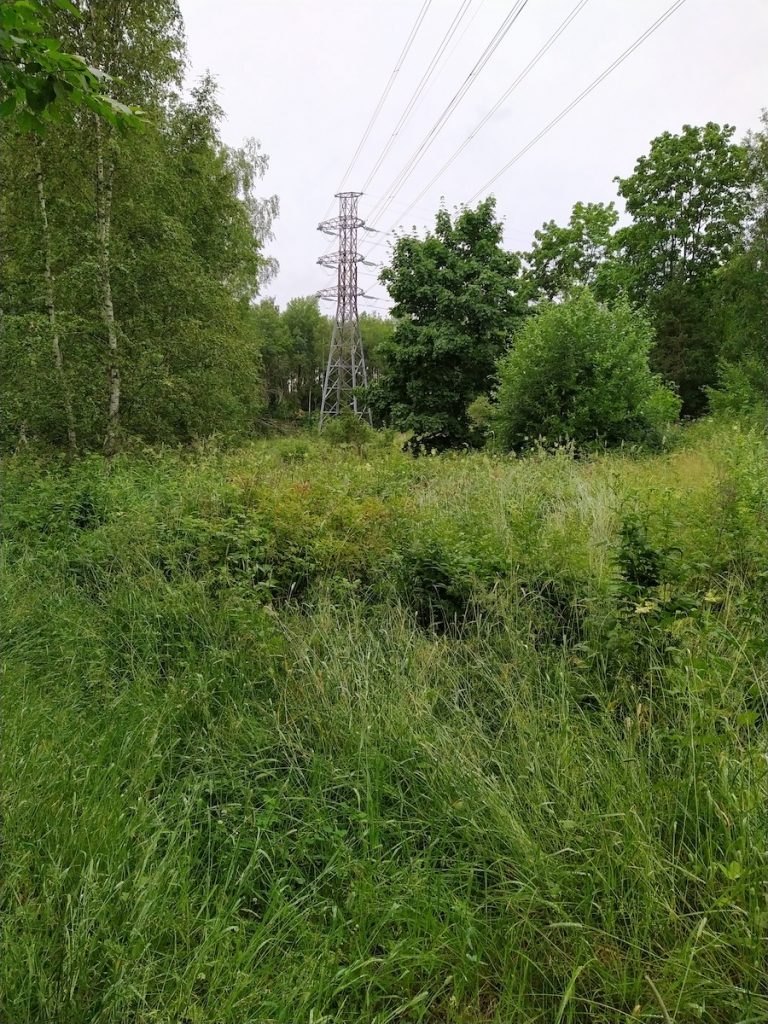
The protection of carbon sinks starts at the drawing board
All the work done at an industrial area’s founding stage, such as felling trees, blasting rocks and earthmoving, affects the area’s nutrient cycle, carbon balance and water economy. The nature inventory carried out at the planning stage will identify valuable nature types and habitats to be saved but most of the area’s carbon sinks and stocks will be cleared off. For the area’s carbon balance, this will mean a negative balance from the outset.
The planning stage is the most important stage when striving to create a carbon-neutral and resource-wise industrial area. Nature-based solutions, trees and green spaces are used to manage storm water and to minimise urban heat islands, for example. Implementing the principles of circular economy can bring savings in green space management. Some nature-based solutions do not require areas to be protected from construction altogether but the solutions can be implemented so that areas are efficiently used while retaining some of the particularly valuable elements of nature. High biodiversity and enjoyable surroundings also increase the value of an area in the eyes of its users and visitors alike.

TAKE-HOME MESSAGES
- The protection of carbon sinks must be ensured at the planning stage.
- “Green coefficient” is a useful tool for planners that can be used in the planning of nature-based solutions.
- Nature-based solutions and green space management can ensure high biodiversity even in densely built-up areas.
“Nature-based solutions for adapting to climate change can be developed and implemented even further (including in densely built-up areas).”
– The climate impact report for the Turku Master Plan 2029, CANEMURE project
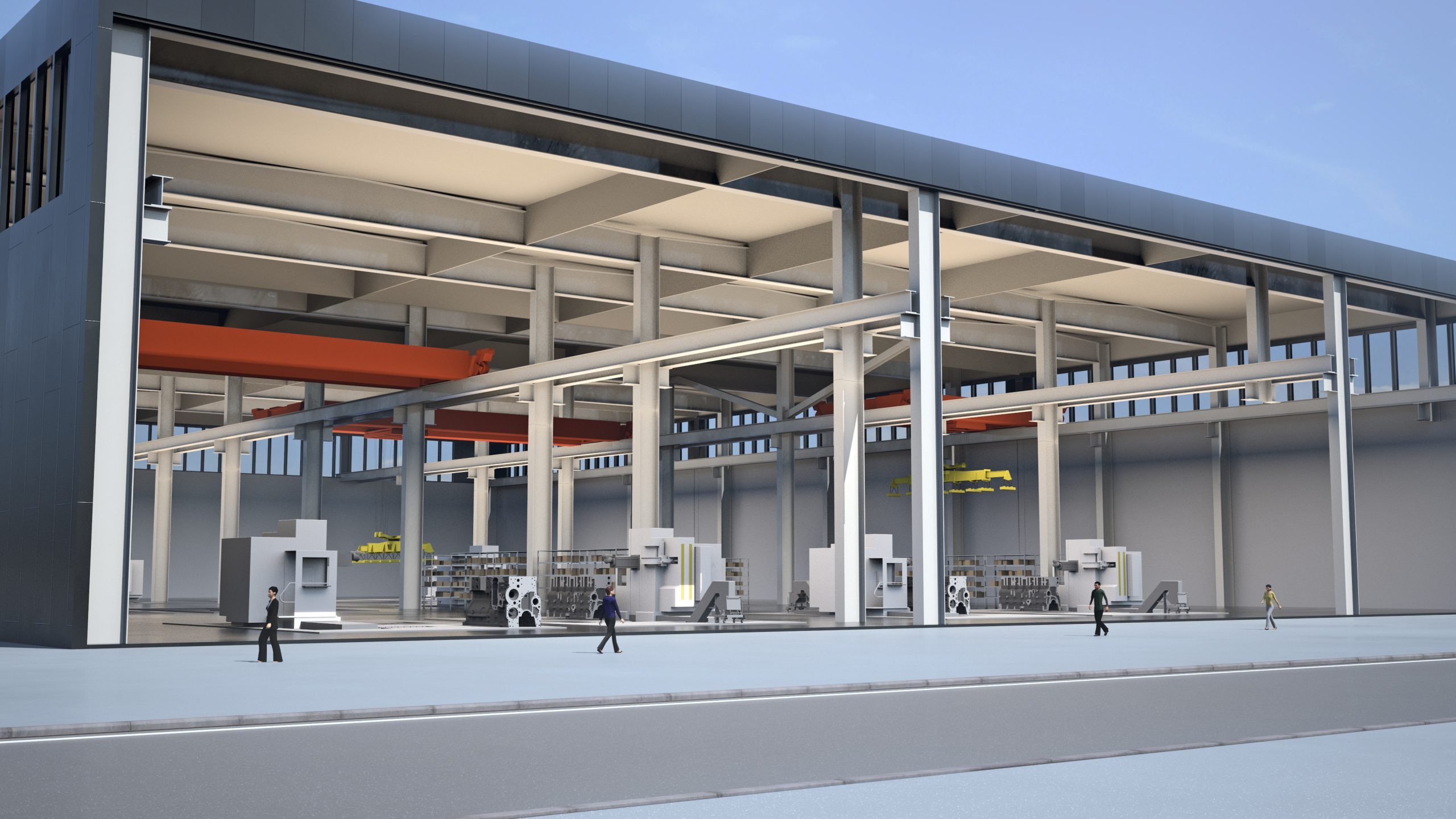
How can ambitious climate goals be achieved through collaboration between cities and businesses?

Businesses and cities work together to become carbon-neutral and resource-wise
carbon-neutral, trade and industry, SME, industrial area, climate projects, climate team, climate partners, climate commitment, SECAP, Blue Industry Park
Cities can support industrial areas, business networks and individual companies through various means and incentives to develop their activities to become carbon-neutral and resource-wise and contribute to building a carbon-neutral city. For companies, cooperation and networking can also offer new business opportunities, especially in operations related to resource wisdom and circular economy.
- Turku Shipyard, which employs 2,000 people, proves by way of example that carbon-neutral solutions matter on the scale of industrial areas.
- Four weeks of intensive training was a great way to introduce climate activities into companies and commit them to the city’s climate targets.
- Eight companies benefitted from the training, as it was customised to meet the needs of individual companies.
This solution is right for you if
- you are looking for ways to develop climate cooperation between the city and companies;
- you want to encourage the businesses in your industrial area to become carbon-neutral and resource-wise;
- you want to have access to a carbon-neutral and resource-wise training package. The package is suitable for instructors, research institutes, educational institutions, cities and entrepreneurial organisations that aim to provide companies with advice and training on carbon neutrality.
Basic facts
- The carbon-neutral and resource-wise business training package is an online course that can be implemented anywhere, anytime.
- Organisers: City of Turku, University of Turku and City of Helsinki.
- The training package contains a lot of material on carbon neutrality and resource wisdom as well as a section of materials on circular economy by Turku University of Applied Sciences.
- The course material has been piloted once, and this was used as the basis for a training package and instructions for organising a course.
- Length of the course: 1 month, four training sessions.
Companies play a major role in the achievement of climate targets in cities
Promoting carbon-neutral and resource-wise business operations on an industrial area scale can have a significant impact on the sectors that emit the most greenhouse gases. The city can achieve about half of the emission reductions required to meet the ambitious climate targets through its own activities. This concept presents ways in which cities can support industrial areas, networks and businesses to improve their operations.
A sustainable urban structure promotes carbon-neutral operations in companies
Emissions from the energy sector in Turku have decreased rapidly in recent years, while the relative share from other sectors has increased. Emissions from electricity and district heating will decrease further, while road transport will become the sector with the highest level of emissions. The coronavirus may affect traffic volumes and the popularity of sustainable modes of transport in the coming years.
The goal in designing a sustainable urban structure is an industrial area in which energy solutions are carbon-neutral or climate-positive and companies’ material logistics, staff and visitors move and operate in a low-carbon and resource-wise manner. Significant decisions are made at an early stage of planning, and many of them are linked to regional targets. Solutions that promote the principle of an emission-free construction site are also taken into account when building the area. It is important to offer guidance in the operational phase. For example, the terms of land transfer and strengthening of cooperation in the business network will commit companies to climate action.
Networks and information to support climate activities in companies
Networks built around urban climate targets (e.g. Climate partners, Turku Climate Team) are a natural context for supporting companies on their journey to carbon neutrality and resource wisdom. They are environments where companies can offer peer support to each other, learn and gain visibility for their climate actions. The networks’ activities can also be linked to ongoing projects, enabling the projects to better reach their target companies, while the companies receive up-to-date information and encouragement.
Demand for information and support has grown significantly, and projects concerning circular economy, resource wisdom and carbon neutrality have been launched to meet this demand. Since companies’ climate activities have an impact on emissions, the project results also improve the climate targets of the cities in which they operate. It is also considered important that synergies and communications are shared between various projects. An information sharing network, coordinated by the city, was set up for climate projects that focus on companies operating in the Turku area.
Intensive training courses boost climate efforts
An intensive course on carbon-neutral and resource-wise companies, Hiilineutraali ja resurssiviisas yritys, was organised to provide companies with information on carbon neutrality and how to communicate their sustainability-related activities. Companies in the Turku area were offered the opportunity to join the Turku Climate team, which they could also use in their communications. They could join the team by filling in a SECAP card, which describes the content and impact of a climate action and is published in the city’s climate action database.
Eight companies from different sectors attended the pilot course through the online platform and set out to make their operations carbon-neutral and resource-wise. As part of the course they were offered specific sessions that focused on an area for improvement chosen by each company. The training was based on circular economy materials by Turku University of Applied Sciences, and a lot of new material was produced for the Howspace platform. The companies provided a lot of feedback on the course, and it was modified on the basis of this feedback. Other operators offering training can use the course and the materials that were generated during the pilot course.
TAKE-HOME MESSAGES
- It is a challenge to offer the same course to companies from different backgrounds operating in different sectors as one set of materials does not work for all of them.
- Howspace is a great training platform, without which it would be difficult to arrange training or, at least, it would require more creativity.
- Companies that attend the courses must be offered constant guidance, so coordinating and facilitating require a lot of resources.
- It can be difficult to find anyone to bounce ideas off unless the companies are willing to pay for it.
- Companies that attend the course should be monitored and engaged in the city’s climate activities even after the training is over.
- Silent conversation, or communicating using messages, is an important part of online training, and there needs to be sufficient time for it during training sessions. It is necessary to make it easier for companies to become involved and they need to be provided with more information so that climate cooperation between cities and companies can develop.
How to organize the HNRY training for companies – Instructions
The Carbon-neutral and resource-wise business training
In January and February 2021, the HNRY project organized the Carbon-neutral and resource-wise business training for companies. The training was targeted for small and medium enterprises (SME) in the maritime and metal industries, as well as for logistics and port operator companies, but registration was still open to companies of all sizes and industries. The aim of the training pilot was to support SMEs on their way to carbon-neutral and resource-wise activities and to encourage them to participate in city’s climate work.
Participating companies were Arkea Oy, Flegma Oy, Finess Energy Oy, MuotoMyrsky Oy, Steveco Oy, Turku Kaupunkiliikenne Oy, Workenter and 3PLogistiikka Oy. The Southwestern Finland’s Joint Municipal Authority for Education and the Åbo Akademi University Foundation took part in training sessions giving valuable feedback for in further development of HNRY training. The training pilot received good feedback from companies.
The training was given in the form of online lectures and sparring sessions, including independent studies aiming to plan and advance the climate work within participating company. Trainers and some of the sparring partners were specialists in carbon neutrality and resource wisdom, communication and marketing. Many participants were sparred by their peer companies who are experienced in climate work.
Training comprised of four lectures common to all and three private sparring sessions. In the sparrings, the company was able to receive new information, motivation and peer support for development goals that were identified already in the registration questionnaire.
The training was arranged via Zoom web conferencing tool and the Howspace platform. Have a look at the HNRY training in Howspace.
The training material
The material is open for use for everyone and suitable for business training organized by cities, research institutes, educational institutions and entrepreneurial organizations, as well as for self-study. Also, the videos produced by the CarbonWise project as well as the Circular Economy Business training material produced by Turku University of Applied Sciences, are found from this page (marked as italics).
The Welcome section
Prior to the first training session, participants were instructed to familiarize themselves with the Howspace training platform. The objectives were introduced and instructions for using Howspace and Zoom were provided in this section.
The first training: Why corporate climate actions matter
- Welcome to the HNRY training (pdf)
- Lauri Larvus, Gaia Consulting: Sustainable business opportunities through climate work (video)
- Eero Yrjö-Koskinen, Central Chamber of Commerce: Presentation of the Climate Commitment
- A task: Company introduction – Write a short introductory text about the company you represent and the motivators for carbon neutrality and resource wisdom.
The second training session: Carbon footprint and sources of emission
- Maija Saijonmaa, Nordic Offset: Principles of Emission Calculation and Greenhouse Gas Compensation (video)
- Mari Saario, Gaia Consulting: Calculating the carbon footprint
- Company example: Valmet Automotive, Jaana Hänninen: How Valmet Automotive considers its carbon footprint in its strategy (video)
- Introductory videos of various counters and tools
- JAMIX carbon footprint counter
- One Click LCA Lifecycle Assessment Tool
- OpenCO2 counter
- Y-carbon
The third training course: Responsibility communication
- Kirsi Liira, Neste: How to communicate effectively about climate actions? (video)
- Maarit Jaakola, Turku University of Applied Sciences: Concepts of Carbon Wisdom (video)
- Successful responsibility communication for SME
- An eco-compass guide to environmental communication
- Homework: Prepare one slide and a five-minute speech to explain the most relevant matter you learned in the trainings and sparring sessions. Also present your company’s climate work development plan for future.
The fourth training session: What does the future hold?
- Ilmastoapu – Consultancy for companies
- Participating companies presenting their learnings and development plans
The circular economy material
This section consisted of materials produced in the Turku University of Applied Sciences’ Circular Economy in Business training.
The Closing session
This session included an evaluation and feedback form, information on the HNRY video series, and a preliminary invitation to the spring meeting “Climate coffee for companies”. The meeting included private discussion sessions for companies to assess the progress in their climate work.
More information about the training
Niina Ruuska, City of Turku, niina.ruuska@turku.fi, p. +358 40 358 9353
“Where can small operators find practical help for carbon accounting and offsetting? I’m sure that it would be possible to reduce emissions significantly simply by offering advice to companies and “holding their hands” at the start of the process.”
– Course participant


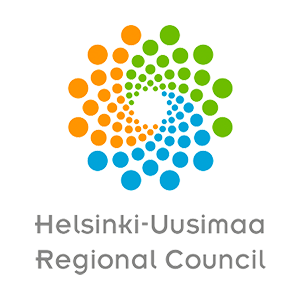
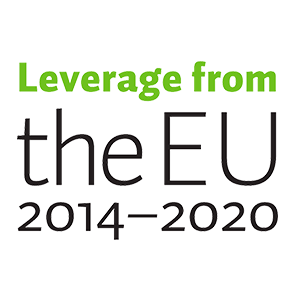
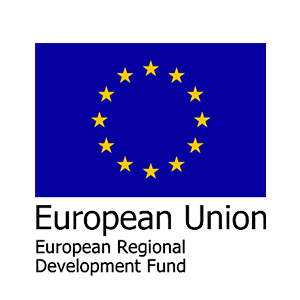
 VTT kehittää Helsingin, Espoon, Vantaan ja Turun yritysalueille vähähiilisiä toimintatapoja
VTT kehittää Helsingin, Espoon, Vantaan ja Turun yritysalueille vähähiilisiä toimintatapoja